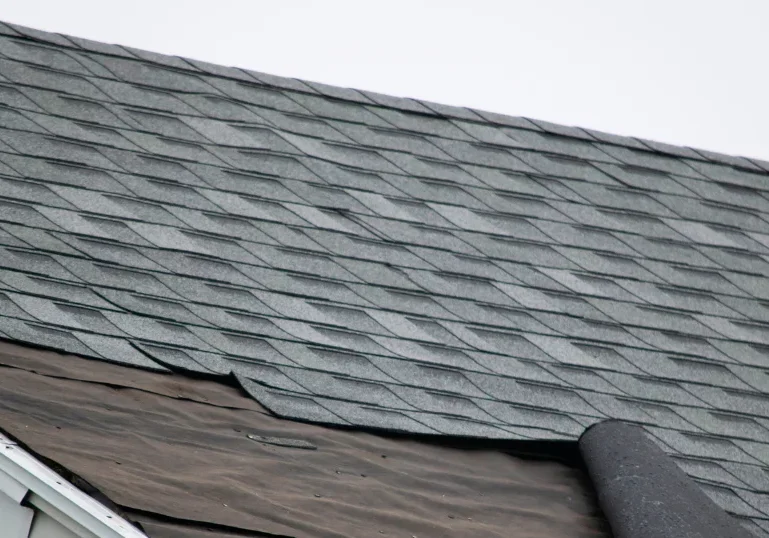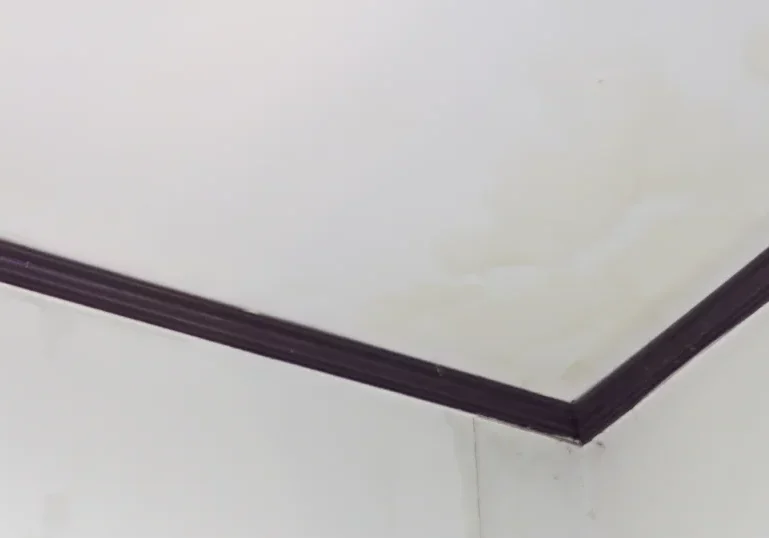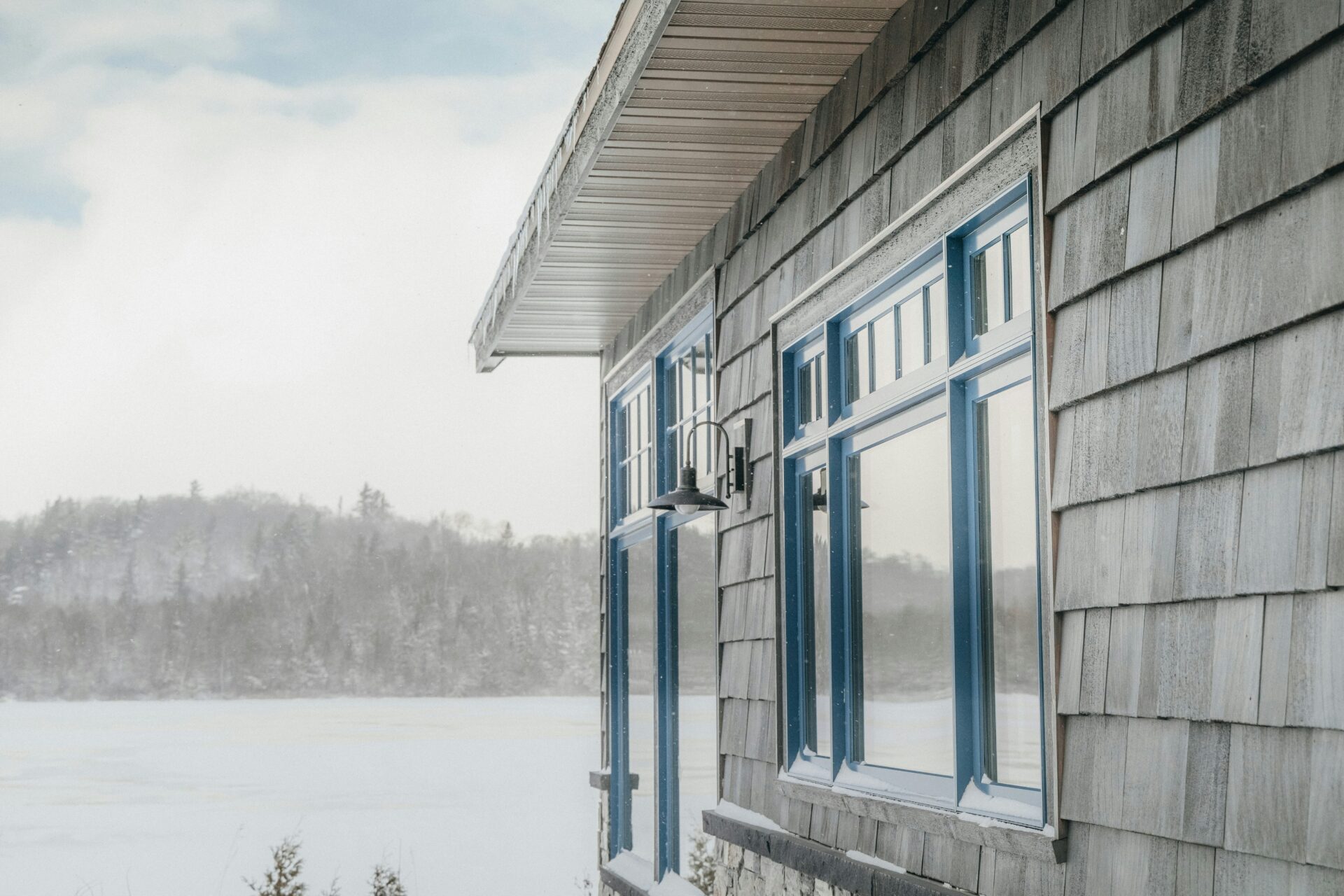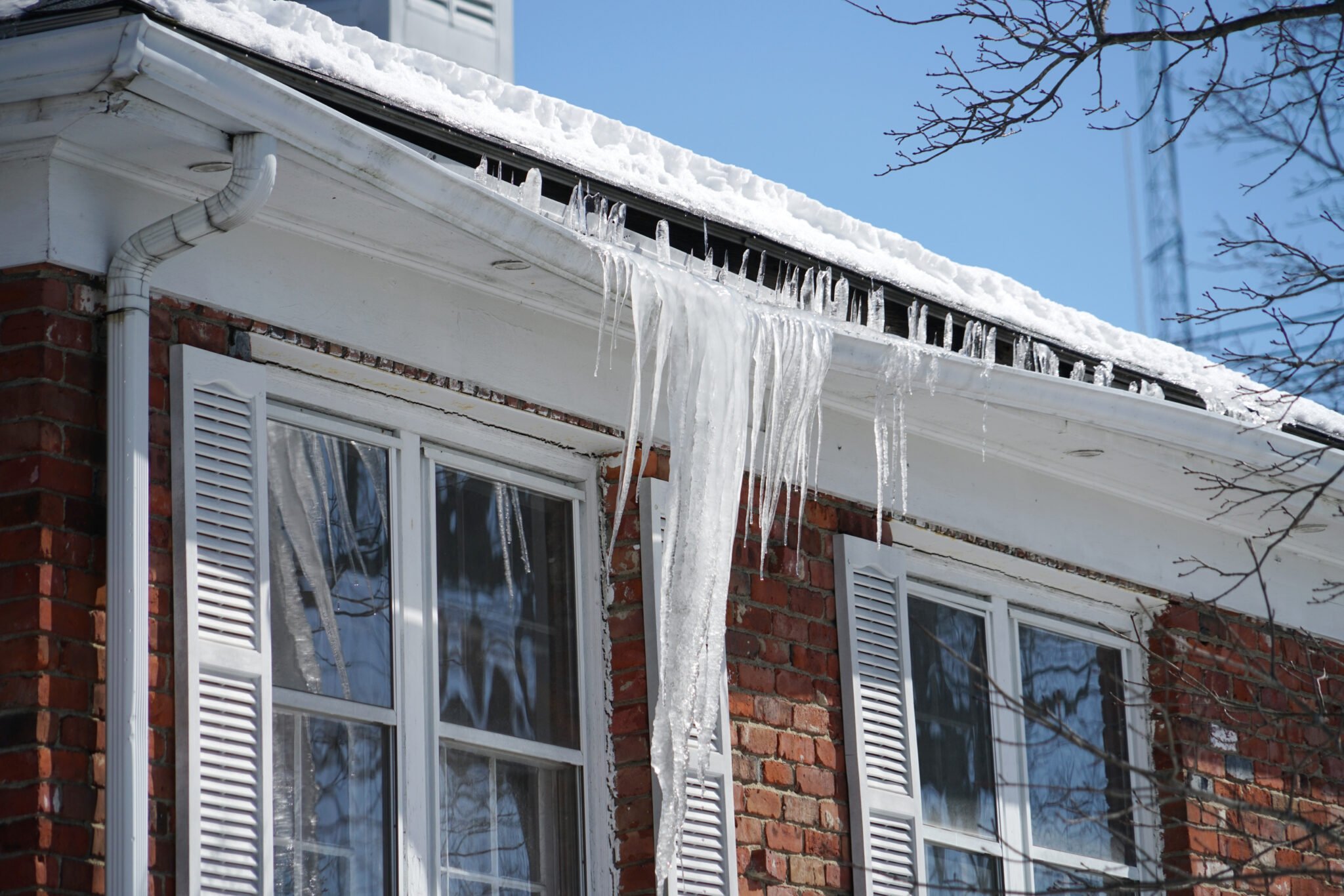Roof leaks often occur and demand prompt attention to avoid water damage. Marks on the ceiling are clear signals of leaking, but other signs may not be noticeable without consistent roof checks. Want to catch roof leaks early and prolong the life of your roof? Below are five indicators that point to the existence of water intrusion.
1. Damaged Shingles and Flashing
The condition of your shingles says a lot about the health of your roof. Buckling or curling roof shingles often indicate a leaky roof, meaning water seeps beneath the surface and requires immediate attention. But that’s not all; damaged flashing or missing metal flashing is also a cause for concern from high winds or storms.
Flashings act as protective barriers where the wall meets the rooftop or other areas prone to water intrusion. A missing gutter apron at these junctions could mean rainwater isn’t effectively directed away from your home, which is another sign of potential leakage problems.

2. Mold Growth on Exterior Walls
Then there’s mold – silent but deadly. Mold thrives in damp conditions, so if you see mold growth on exterior walls, it suggests water is seeping through from above due to roof leaks. Understanding these unexpected dangers of leaky roofs can help prevent significant structural damages and costly repairs. It’s essential to address the root cause of the mold and eliminate it before it extends to other parts of your home.

3. Ceiling Stains
If water stains stretch across your ceilings or trickle down your walls, it’s usually a sign of a compromised roof. Pinpointing the leak can be challenging, but addressing the repair is often straightforward. Don’t underestimate the urgency of this issue; even seemingly small leaks can swiftly escalate into severe concerns like mold, decayed framing, destroyed insulation, and damaged ceilings. Act promptly to protect your home’s integrity and safety by fixing the source of the leak.
4. Shiners
If you notice a small ceiling stain, check the underside of your roof for ‘shiners,’ which are nails missing their framing target. Moisture from the home can condense on these cold nails, especially noticeable on chilly nights as they frost up. This cycle of melting and refreezing can lead to leaks.
5. Strong Odor
Strong odors in your home are among the most telling signs of a roof leak. The scent often emerges when water intrudes and lingers, creating an ideal environment for mold growth, leading to unpleasant odors and potential health hazards. If ceiling stains accompany these odors or you suspect mold formation due to the leak, it’s crucial to act swiftly. Apart from addressing the leak, you may need to replace wet insulation or eliminate the mold.
You can get a roofing contractor to examine and find the problem with the roof before providing a solution.

6. Blocked or Rusted Gutters
Blocked Gutters: Blocked gutters can indicate roofing issues, especially when you find roofing materials in the debris. Often, these blockages stem from damaged shingles. When your gutters are obstructed, it’s a strong indication that your roof might be compromised. In such cases, consulting with a local roofer, like one from Oaks Roofing and Siding, is crucial for a thorough inspection and necessary repairs.
Rusted Gutters: Gutter leaks predominantly initiate at rusty spots or seams that have been exposed to expansion and contraction. If your gutters have rusty patches or compromised seams, this can lead to leaks.
7. Clogged Soffits
Soffit vents draw in outdoor air to dispel warm air out of roof vents; however, when they become dirty or blocked with debris or mold buildup, they can lead to moisture buildup on your roof’s framing, which in turn becomes an ideal environment for leaks and mold growth. Ensuring unblocked soffit vents prevents potential roof leaks and mold proliferation.
FAQs About Signs of Leaking Roof
Oaks Roofing & Siding: Quality You Can Trust
At Oaks Roofing & Siding, we offer various dumpster sizes to meet your needs. Our dedicated representatives are always here to answer questions so your rental process goes smoothly. Call or contact us today, and we'll be happy to help.



